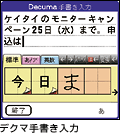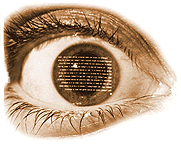Someone asked for a
Heisig Version of my supermemo database.
If you're following Heisig and don't know Japanese at all yet, I guess that's preferable. Personally, I know enough to prefer my
original stroke & frequency based ordered PDB, templated to show the meaning, readings, and compounds as the question and Kanji as the answer.
I hope
mapletop updates the software eventually. I'd really like hi-res and to tweak the forgetting rate--I'm guessing that with 2000 kanji to learn one would be better off with a more aggressive strategy than the hard-coded 10%. And with a database this large, it'd be an awful shame if I can't transfer the learning process to another version if I decide to upgrade to a smartphone or something on a different platform. So if you use these, please bug them!
BTW, for other versions of Supermemo, it's possible to use something called
SuperMemo converter to convert these databases. I tried the Q&A format for uploading this to the web-page version of supermemo, and with some minor tweaking of the file was able to get it imported.
Otherwise, if someone wants to convert to xml and upload these files somewhere, please be my guest (but a little credit would be nice).
 As for palms themselves, let me whole-heartedly recommend the awesome
As for palms themselves, let me whole-heartedly recommend the awesome  Well, I finally got around to creating my own
Well, I finally got around to creating my own 
